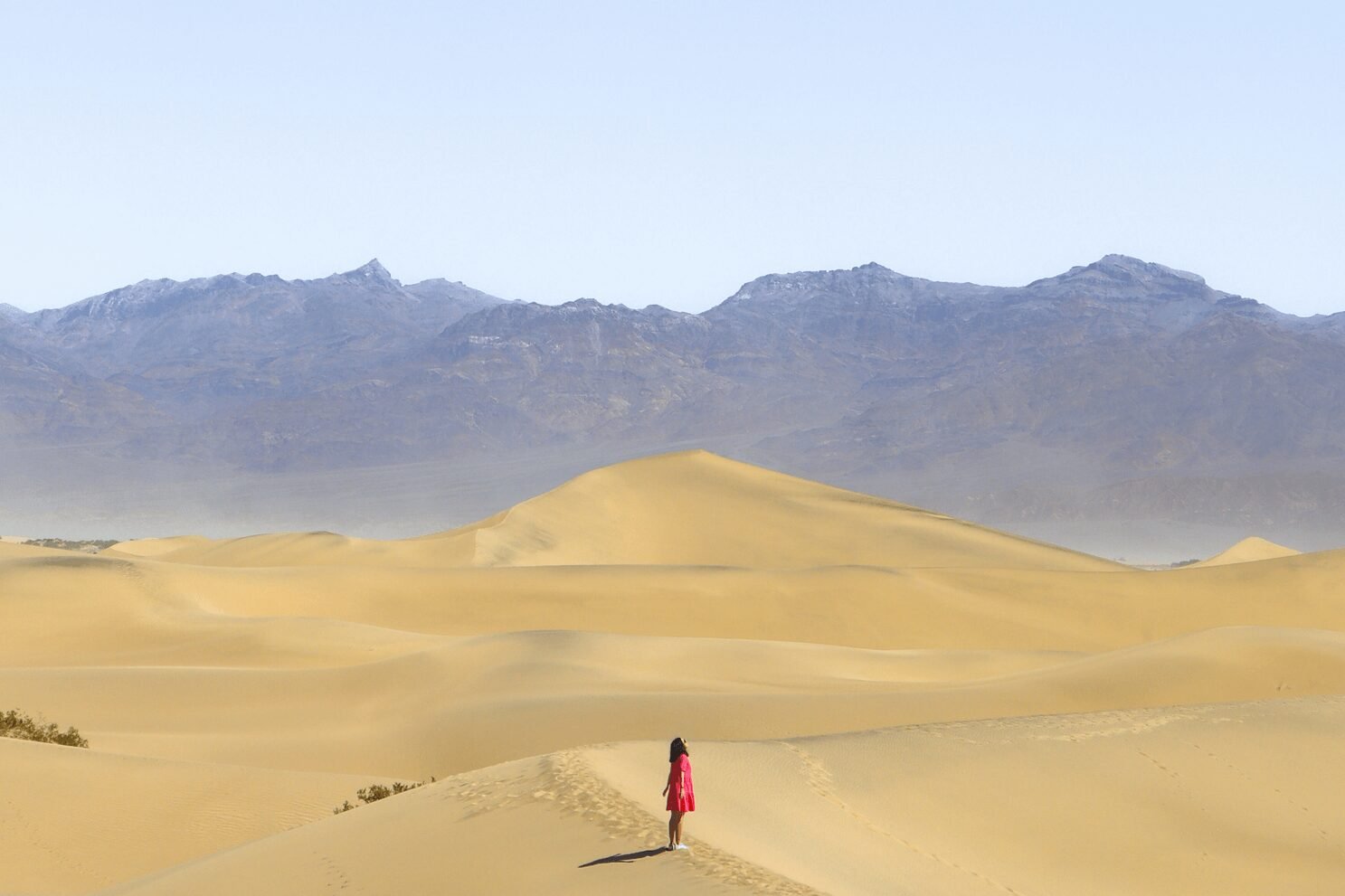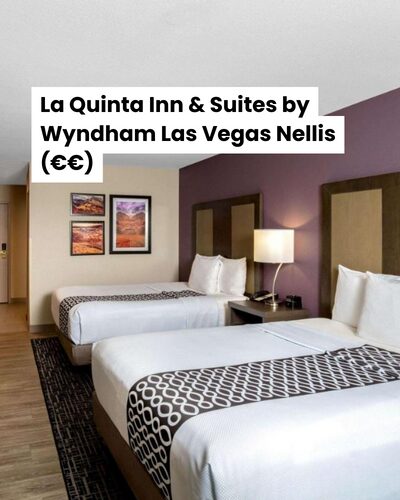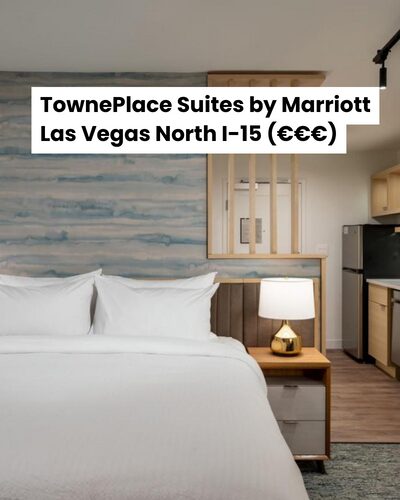Spending one day in Death Valley National Park will certainly be a memorable experience. This national park in the US is unique and, although its name might be a bit scary (Death Valley), it has breathtaking landscapes.
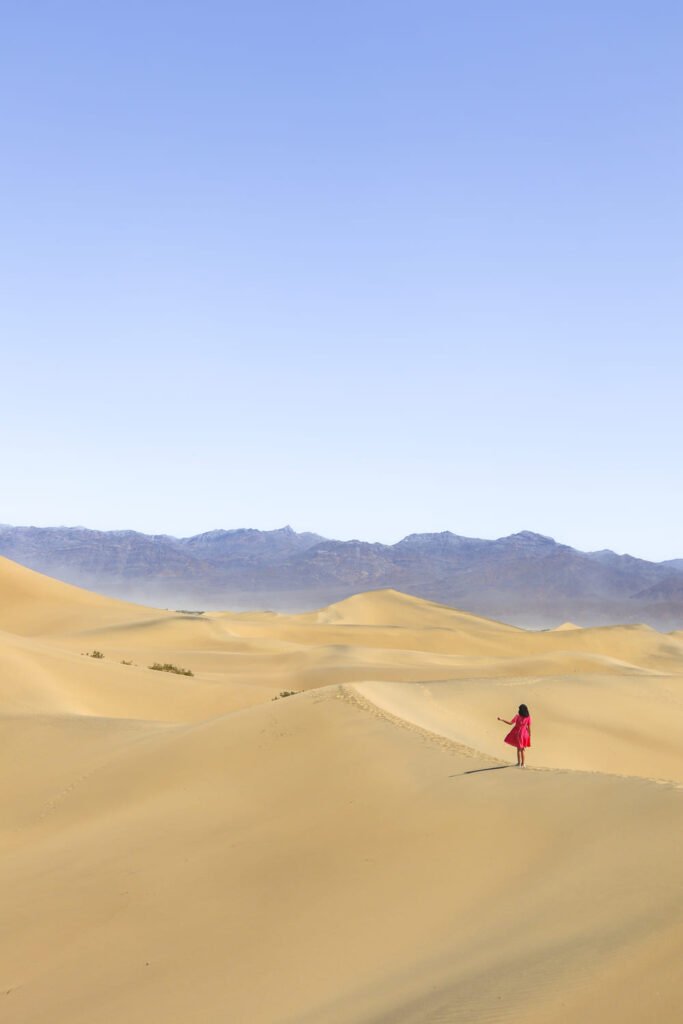
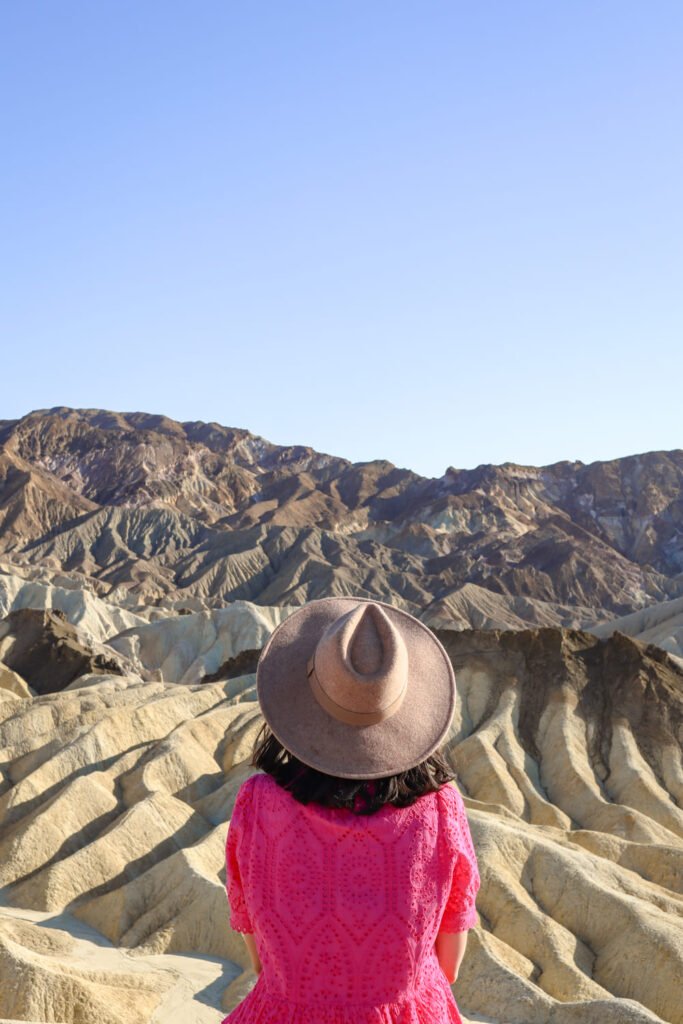
Get ready to explore dirt roads, colourful mountains, the lowest point in the United States, salt flats in Badwater Basin or even dunes (Mesquite Flat Sand Dunes).
Despite the weather conditions that make this place inhospitable (especially in the hottest months of the year), something is surprising about this park.
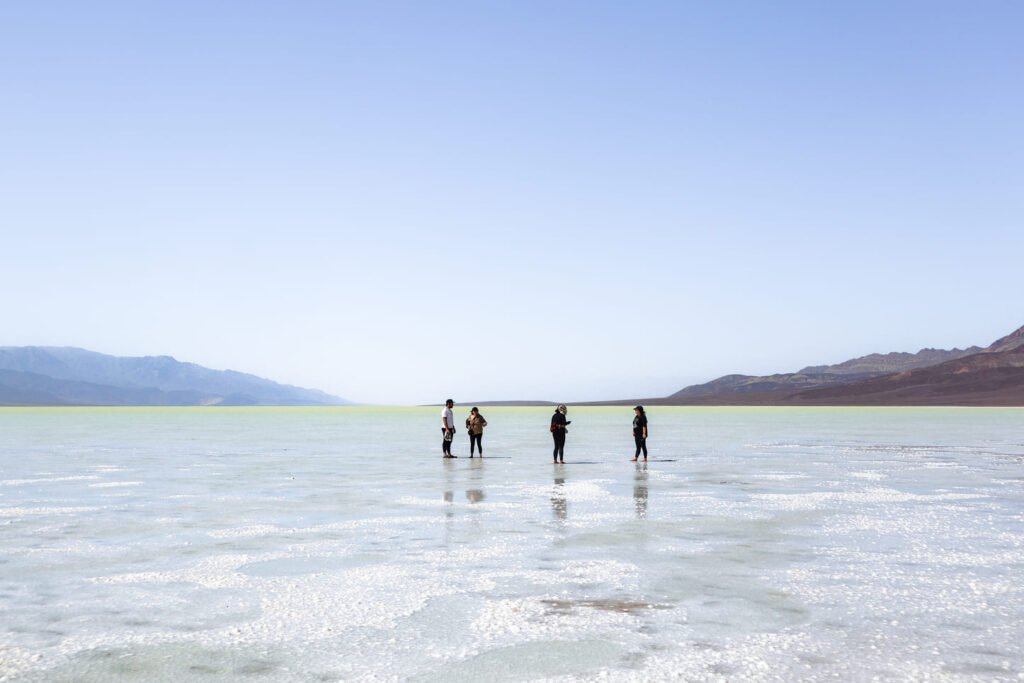
Founded in 1994, the park receives around 1 million visitors every year and is located in Nevada and California. It is also one of the largest national parks in the United States, covering 13,650 km².
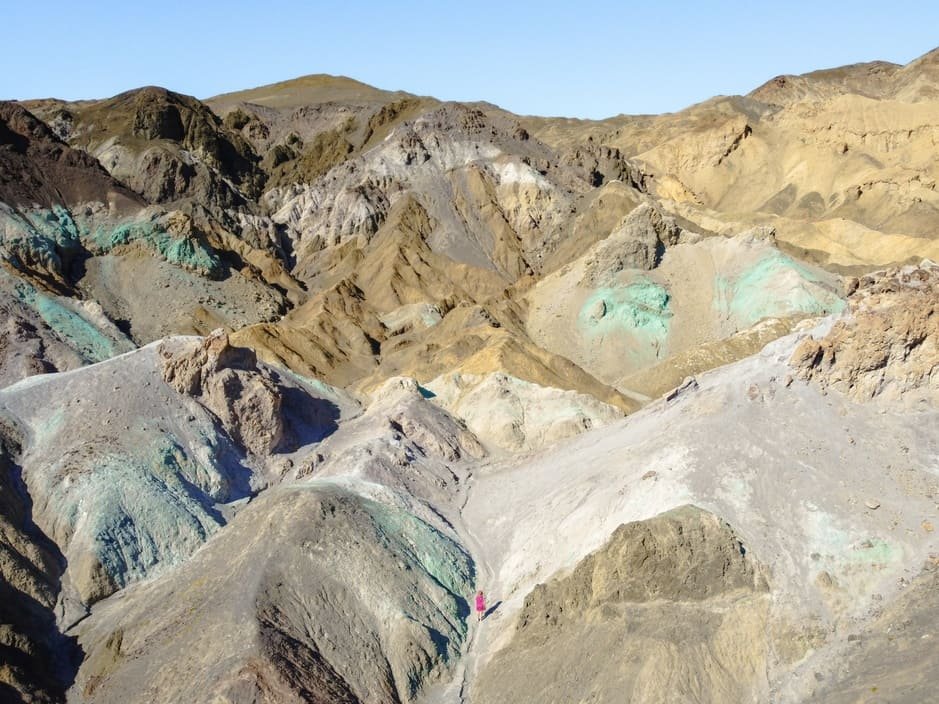
Its name is related to a group of pioneers who got lost in this region in the mid-19th century. Although only one of the group members died, they all thought they would die there, and so this place was named Death Valley.
Given its characteristics and arid landscapes, the park has been used in the filming of several movies, the best known being Star Wars: A New Hope.
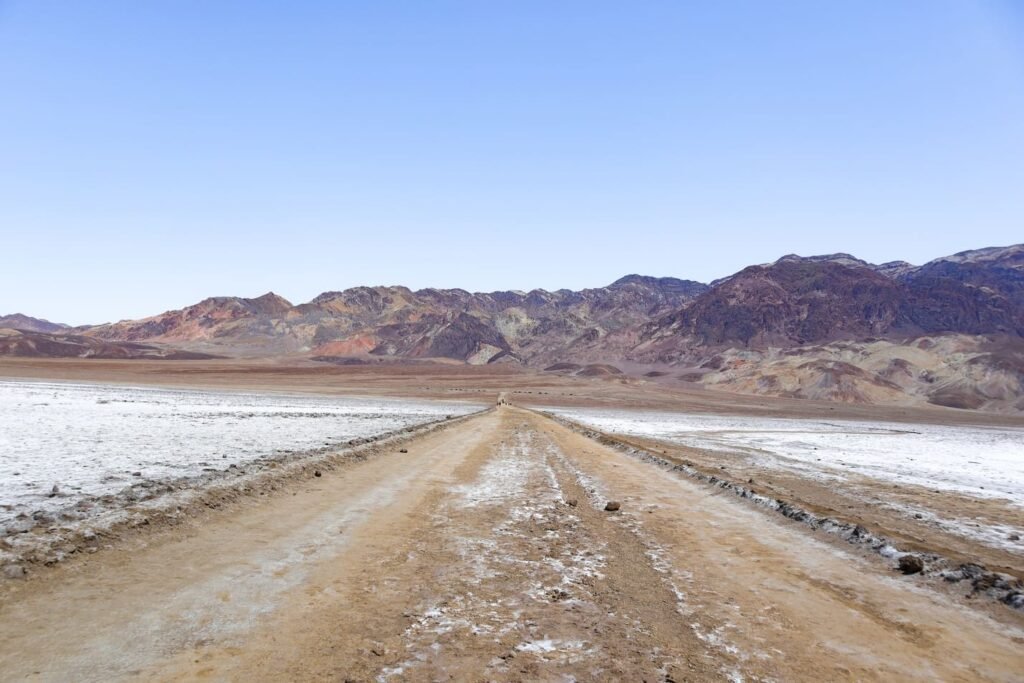
Although there are lots of things to visit in the park, it is possible to visit Death Valley highlights in just one day. So, throughout this post, in addition to a Death Valley 1-day itinerary, you’ll also find other tips, such as:
- How many days to spend in Death Valley
- Best time to visit Death Valley National Park
- How to get to Death Valley
- Airports near Death Valley
- Hotels near Death Valley
Where is Death Valley National Park?
Death Valley is located in the states of California and Nevada, mostly in California. However, the best-known city closest to this park is Las Vegas, located in the state of Nevada.
On average, the drive between Las Vegas and Death Valley (depending on which part of the park you’re visiting) takes 1h45-2h30.
How many days in Death Valley National Park?
Despite the size of this park, some of the best things to do in Death Valley can be visited in just one day. This includes visiting places such as Mesquite Flat Sand Dunes, Badwater Basin, Zabriskie Point and Artists Drive, among others.
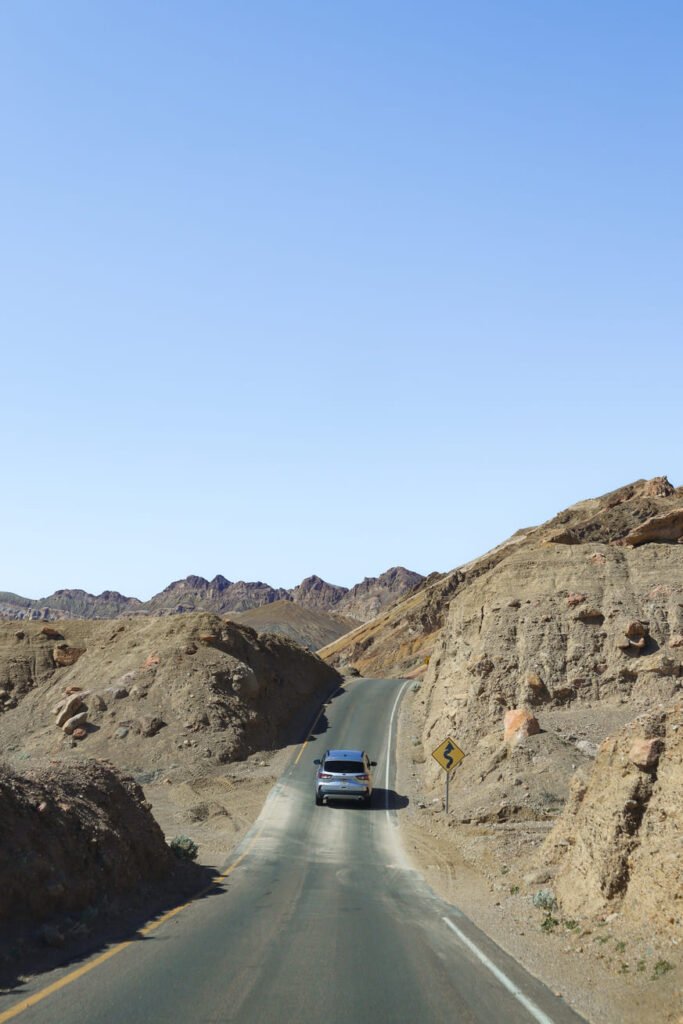
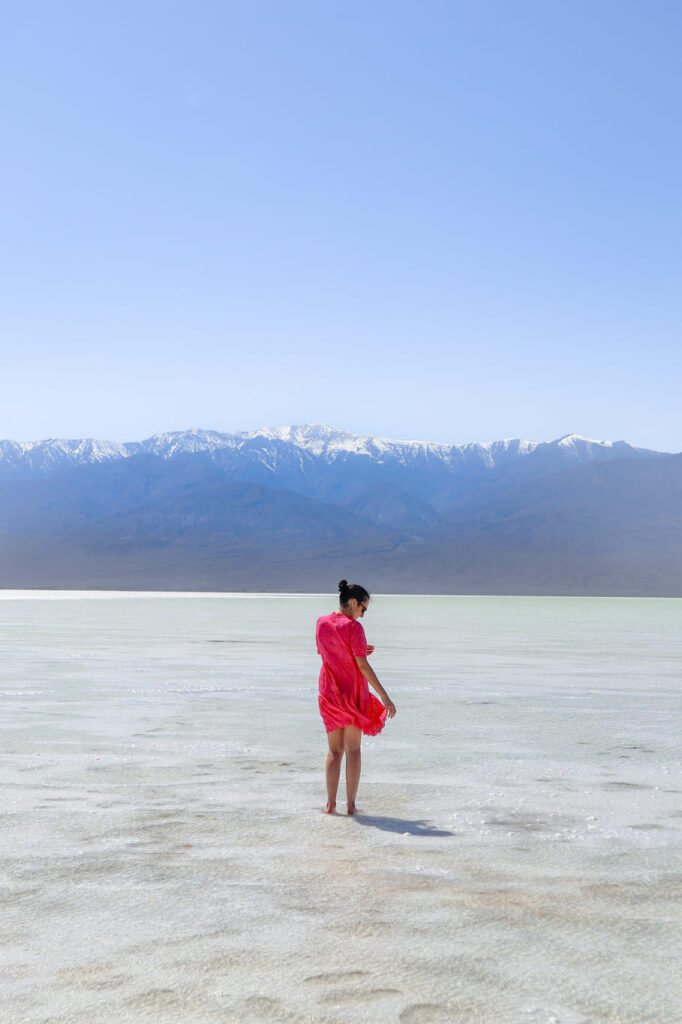
However, with more days in the park, you can visit other places such as Racetrack Playa or even more remote places in the park, such as Eureka Sand Dunes or Telescope Peak.
Therefore, you should try spending at least 2 days in Death Valley. However, don’t rule out the possibility of visiting this unforgettable park if you only have one day available. It’ll be great anyway!!
What is the best time of year to visit Death Valley National Park?
One thing that attracts thousands of visitors to this park every year is the excessively high temperatures during summer. After all, it was in this park that the highest temperature on planet Earth was recorded! In 1913, the thermometers in Furnace Creek marked 56.7 °C (134 °F).
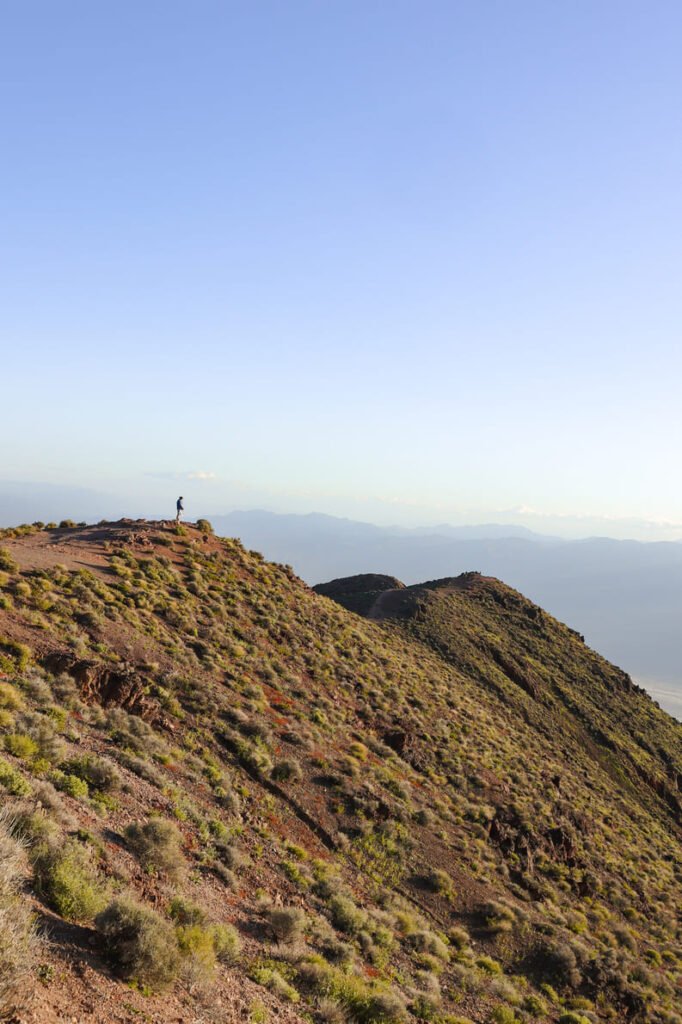

Although this record was a long time ago, in the hottest months the thermometers usually exceed 50 °C (122 °F) and there is even a thermometer in the park where you can check the temperature at any time. So, I don’t suggest visiting Death Valley in the summer (June to September), as it’s unlikely to be a pleasant visit due to the heat.
What’s more, at the end of the summer, there is a higher chance of flash foods, so this is really a time you should avoid visiting the park.
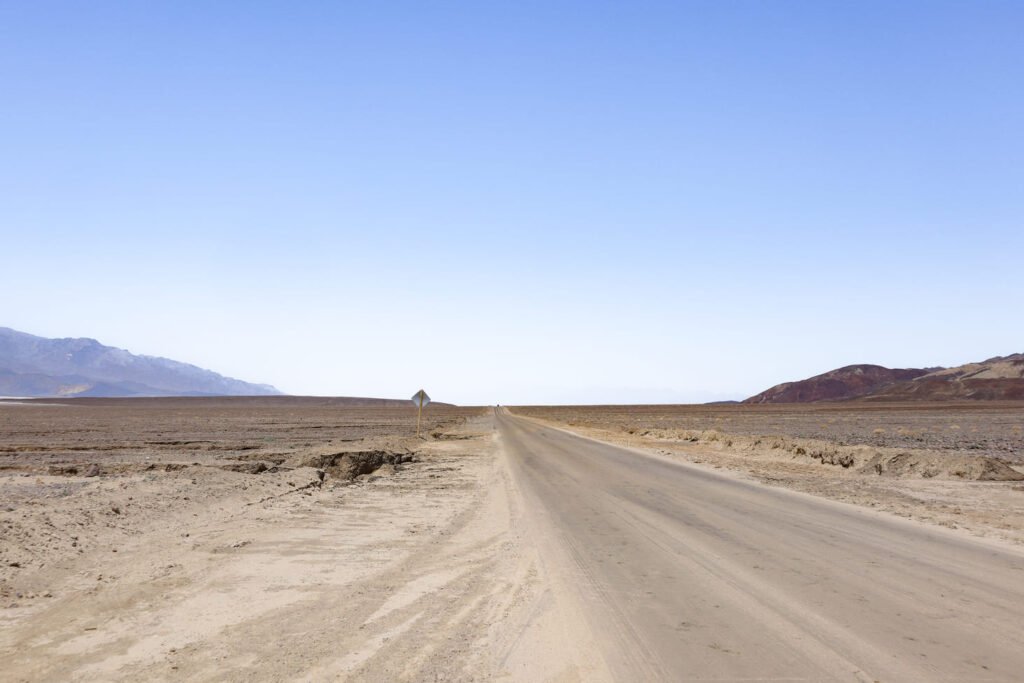
The best time to go to Death Valley is undoubtedly in early spring and late autumn when the temperatures are milder. In fact, spring is the most popular season to visit this park, as this is when you can find the superbloom, where you can see a lot of flowers in Death Valley. However, this isn’t something that happens every year, as it depends on the weather conditions. You can find out more about this phenomenon (including forecasts) on the official website.

Another interesting time to visit Death Valley is winter. Winter temperatures in Death Valley are pleasant, with average high temperatures of 19 °C-25 °C (66 °F – 77 °F) and lows of 4 °C – 8 °C (39 °F – 48 °F). These lower temperatures occur especially at night.

It doesn’t rain much in Death Valley. However, wind is quite common in this park, especially during spring.
In my case, for example, I visited the park in mid-April and, although it was hot, the temperature was still very bearable. What’s more, at the highest points (such as Dante’s View), it was quite chilly.
How to get to Death Valley National Park?
The largest city that is the closest to this park is Las Vegas, which is located about 1h40-2h30 by car. However, there are other smaller towns close to Death Valley, such as Beatty, Skidoo, Chloride City, Harrisburg, Furnace Creek or Leadfield.
In my case, I ended up staying overnight in Beatty the night before visiting the park, as this is one of the closest towns.

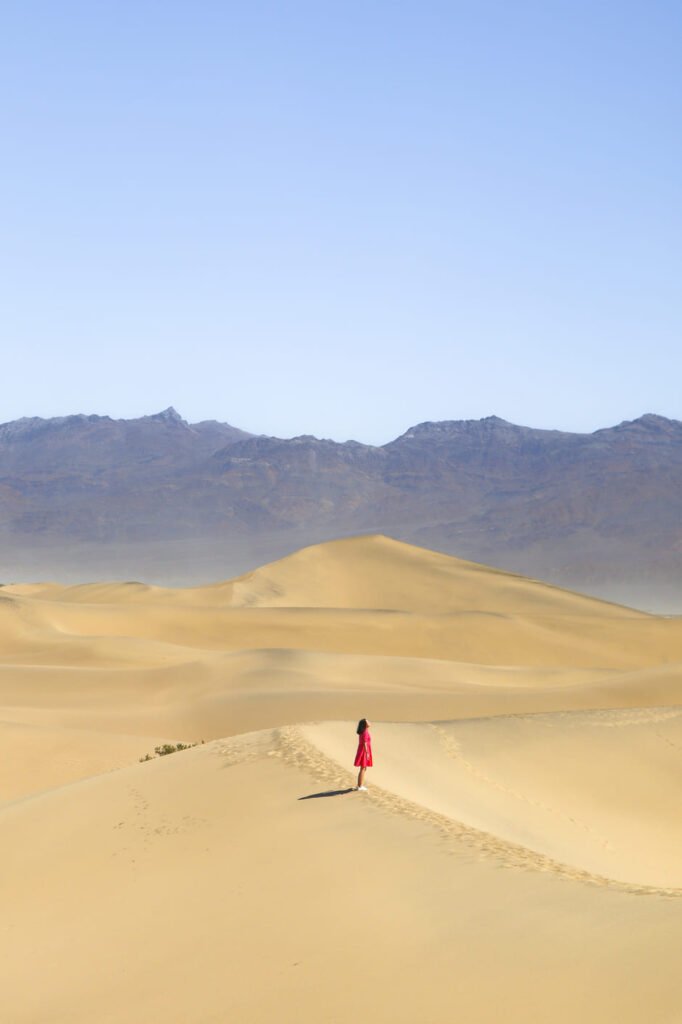
The closest airport to Death Valley is Furnace Creek, but it has no commercial flights. Therefore, the best option is to fly to Las Vegas airport (LAS), which has several connections, both domestic and international.
To ensure greater flexibility when designing your Death Valley itinerary, I suggest renting a car and driving from Las Vegas to Death Valley.
💡 EXTRA TIP: When I visited Death Valley National Park, I was doing a road trip through other national parks in the United States. There’s no doubt that renting a car was the best option, as it gave me a lot of freedom to prepare my itinerary. I rented a Toyota RAV4 from Avis in Los Angeles and really enjoyed their service. The decision to rent a jeep was clearly the right one since it was very practical for driving some of the roads in Death Valley.
However, given the park’s proximity to Las Vegas, there are several Las Vegas tours to Death Valley:
How much is Death Valley entrance fee?
You have to pay to enter Death Valley National Park. There are various entrance tickets and passes available. For example, entrance fees with a private vehicle are 30 USD (the price is per vehicle, not per person). This entrance fee gives you access to the park for 7 days! There is also an annual pass which costs 55 USD.

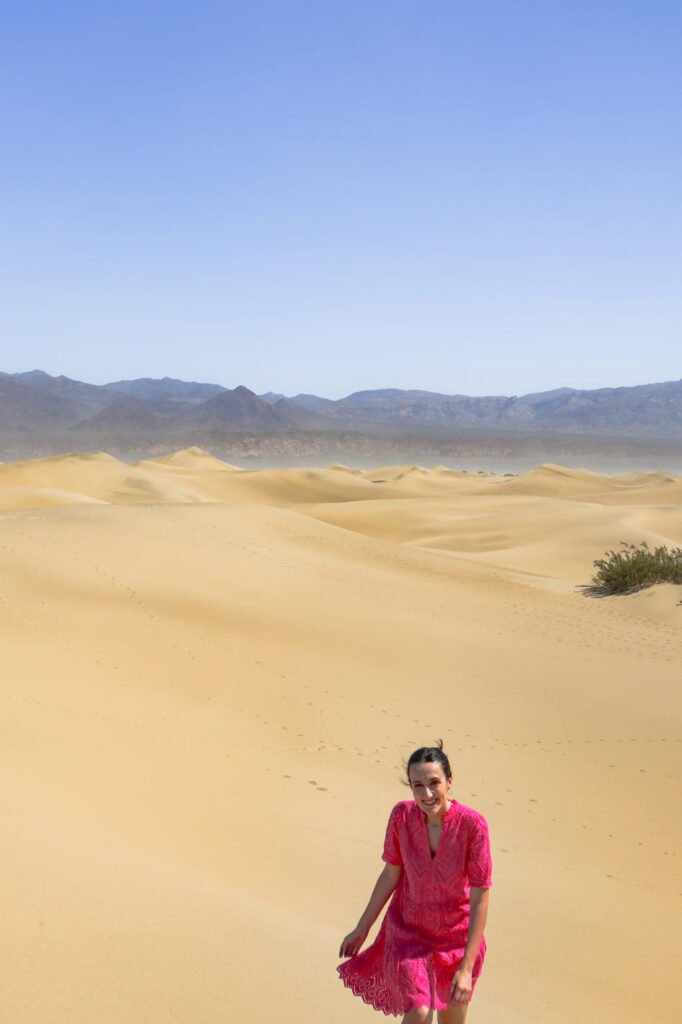
However, if you wish to visit other national parks in the United States, other options are more worthwhile. One such example is the America the Beautiful annual pass. This pass costs 80 USD per vehicle and is valid for one year for all the national parks in the country. Given the average price of entry to the various parks, you only need to visit 3 national parks in a year to make it worth buying America the Beautiful! More information about the passes is available here.

Any of these tickets or passes can be bought at the entrances to the various national parks. I should warn you, however, that in Death Valley they only accept card payments and there are no official entrances to the park. You can check on the official website where you can buy the entrance ticket/pass. Alternatively, you can buy it online 😉.
If you choose to buy the America the Beautiful annual pass, once you’ve bought it, you’ll need to show your pass and ID when entering each park, as the pass is non-transferable.
Is there cell service at Death Valley?
The cell service in Death Valley National Park is quite limited, so you should be prepared for no internet access. In my case, for example, during the whole day I spent in the park, I rarely had cellular service on my phone. Therefore, I strongly suggest downloading the map of the park area to be available offline on Google Maps.
What is the best way to visit Death Valley?
Public transport within the park is non-existent, so the best way to visit the park is by car.
For most areas of the park, a “normal” vehicle should be enough and you won’t need a 4×4. However, there are some roads in the park (such as the one leading to Racetrak Playa) where a high-clearance vehicle is required.

So, even if it is possible to visit the park without a 4×4, I recommend renting a high-clearance vehicle to make your visit more comfortable 😉.
💼 TRAVEL INSURANCE: Unexpected events happen anywhere in the world, so I always recommend getting travel insurance. I regularly use Heymondo, which offers some of the highest coverages on the market at very competitive prices. As well as covering medical expenses, Heymondo’s insurance also covers the loss or theft of luggage, electronic equipment and more. They also have a 24/7 customer service through their App. As A Ticket to Take Off reader, you get a 5% discount when purchasing Heymondo insurance. The purchase must be made using this link, and the price shown on the website already includes the discount.
Is there food in Death Valley National Park?
Unlike other parks in the United States, there are a few stores and restaurants in Death Valley:
- [Furnace Creek] The Inn at Death Valley: they serve breakfast and dinner (booking beforehand is recommended)
- [Furnace Creek] The Ranch at Death Valley: serves breakfast, lunch and dinner and also has a store
- [Stovepipe Wells] Toll Road Restaurant: serves breakfast, lunch and dinner
- [Stovepipe Wells] Badwater Saloon: for lunch and dinner
- [Panamint Springs] Panamint Springs Resort: there’s a restaurant with food all day and a store with several kinds of products
However, depending on your itinerary and to make the most of your days in the park, I suggest taking some snacks and a picnic for lunch.
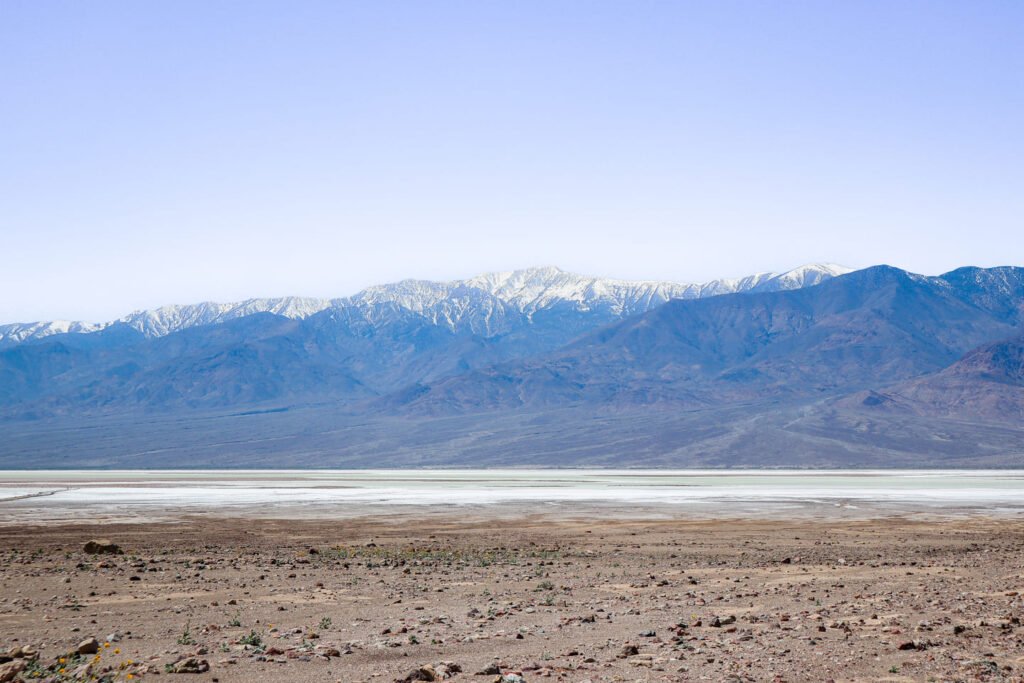
Hotels near Death Valley National Park
Given the size of this park, you should first define what you want to include in your Death Valley National Park itinerary and only then choose your accommodation. Otherwise, you may end up choosing accommodation that is too far away from the points of interest you want to visit.
Accommodation inside Death Valley National Park
There are some accommodation options within the park:
- Stovepipe Wells Village: a good option for those on a tighter budget
- The Oasis at Death Valley: there are two types of accommodation (The Inn and The Ranch, with the second option being cheaper)
- Panamint Springs Resort: in addition to the “normal” rooms, there is also the option of camping
If you’re more adventurous, there are also campsites in Death Valley. You can find out more about camping in Death Valley on the official website.
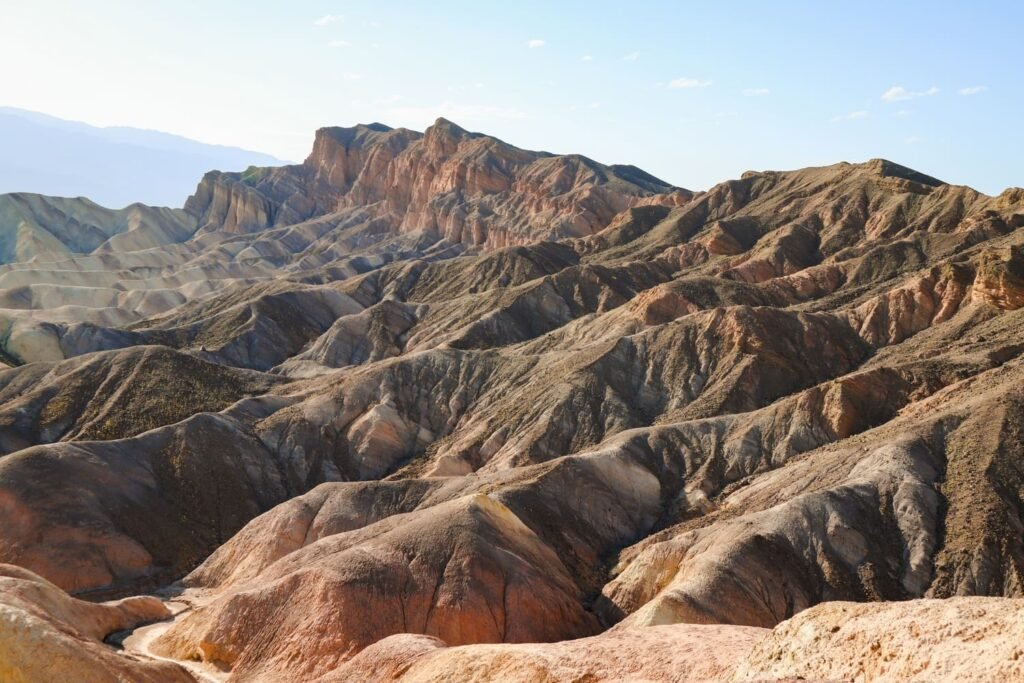
Accommodation outside Death Valley National Park
Another possible (and probably cheaper!) option is to stay outside the park. For example, one of the best places to do this is Beatty – a small town located very close to some very popular sites in Death Valley, such as the Mesquite Flat Sand Dunes.
This is where I ended up staying the night before I visited Death Valley. I stayed at the Exchange Club Motel and, despite being a motel, it had all the necessary conditions for a restful night. A night for two people cost 85€. Right next to the motel, there are two or three options where you can have a meal!

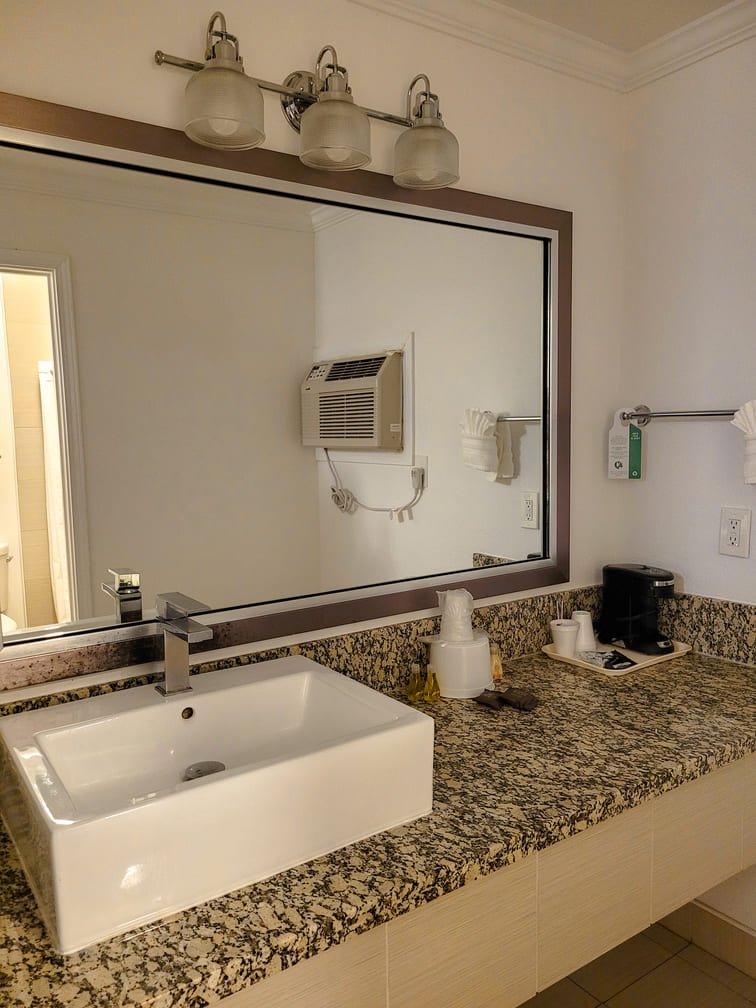
There are other towns near Death Valley where you can also look for accommodation, such as:
- Pahrump (about 1h45 from the visitor center in Furnace Creek)
- Shoshone (1h from Furnace Creek Visitor Center)
- Lone Pine (1h45 from Furnace Creek Visitor Center)
Although it’s further away (almost 2 hours by car), you can also stay in Las Vegas, where there is much more accommodation offer.
I had the opportunity to try out two hotels in Las Vegas and I can recommend both. The first recommendation is Hyatt Place Las Vegas, relatively centrally located, but away from all the hustle and bustle. The hotel has a slightly old-fashioned décor, but the room was very spacious and had all the conditions for a restful night’s sleep.
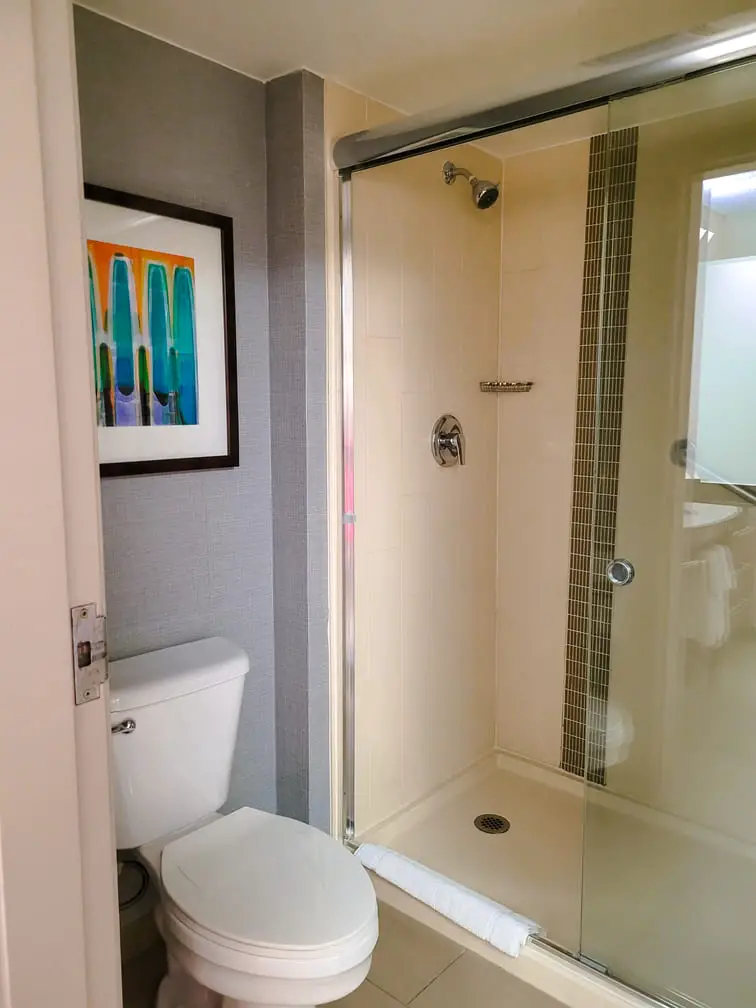
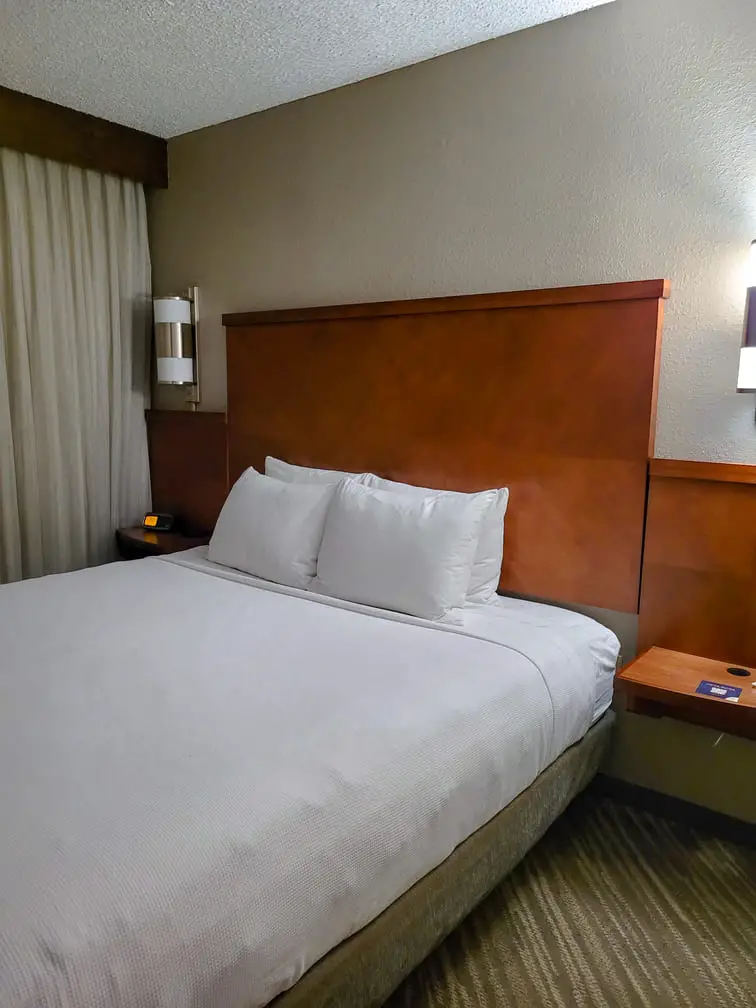
The second recommendation is Club Wyndham Grand Desert. This is a resort and perfect for longer stays, as it includes services such as a swimming pool and gym and the rooms have all the amenities for a longer stay. It’s relatively more central than the hotel mentioned above (being closer to the Las Vegas Strip) and has parking available.
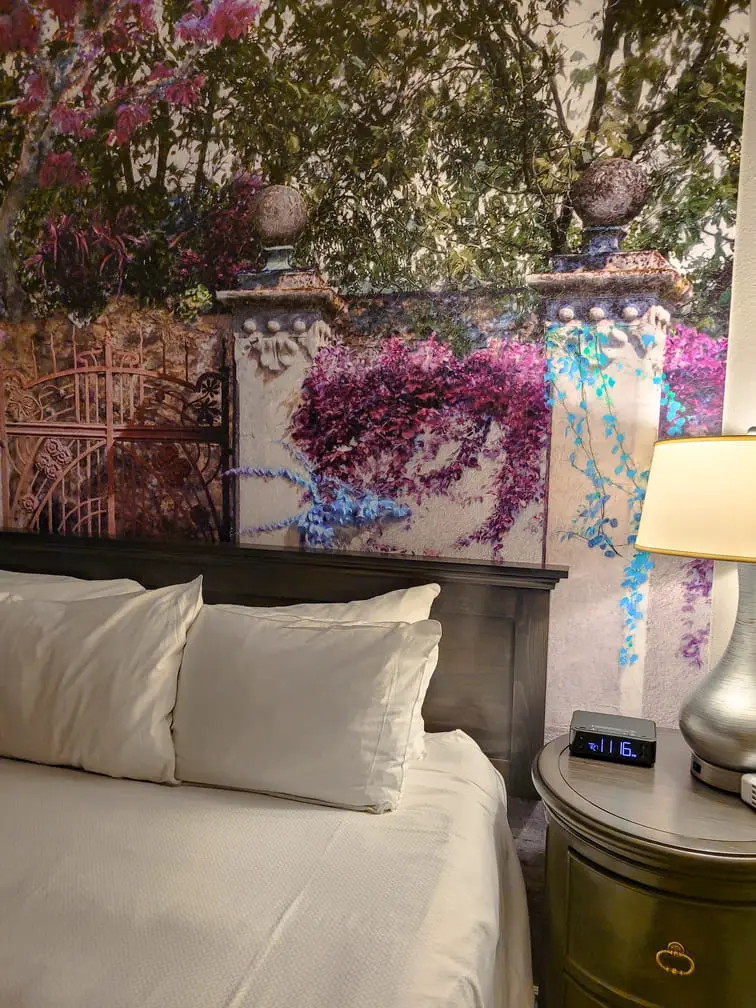
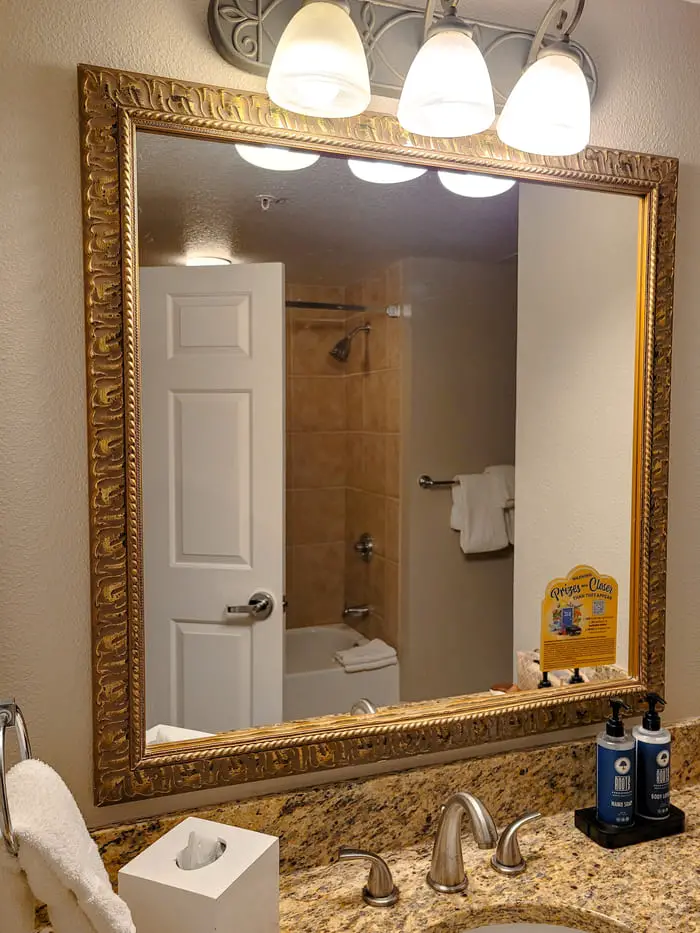
In any case, since the aim of this night in Las Vegas is to head to the Valley of Fire the next day, I suggest other accommodation options in Las Vegas a bit further away from the city centre:
Activities & tours in Death Valley National Park
Death Valley Must-See Map
On the map below you can find what to see in Death Valley in one day, as well as other points of interest if you have more time available in the park. On the map, you can also see gas stations, restaurants and lodgings inside the park.
📌HOW TO USE THE MAP: Click on the top left corner to access the various layers of the map. You can select the layers you’re interested in and also find out more about each point of interest by clicking on it in the left-hand sidebar or on the pin on the map. Add the map to your Google Maps by clicking on the star next to the title. To access the map, simply go to Google Maps ‘Saved’ and click on ‘Maps’!
One day in Death Valley National Park – Itinerary
In the following paragraphs, I’ll talk about what to do in Death Valley if you only have one day available. The points of interest are arranged in such a way as to optimize the time available in the park.
However, at the end of the article, you can find more suggestions of other things to do in Death Valley.
» Mesquite Flat Sand Dunes
I start this Death Valley itinerary at one of the most photogenic spots in the park! The Mesquite Flat Sand Dunes are dunes that will delight anyone, especially the little ones.
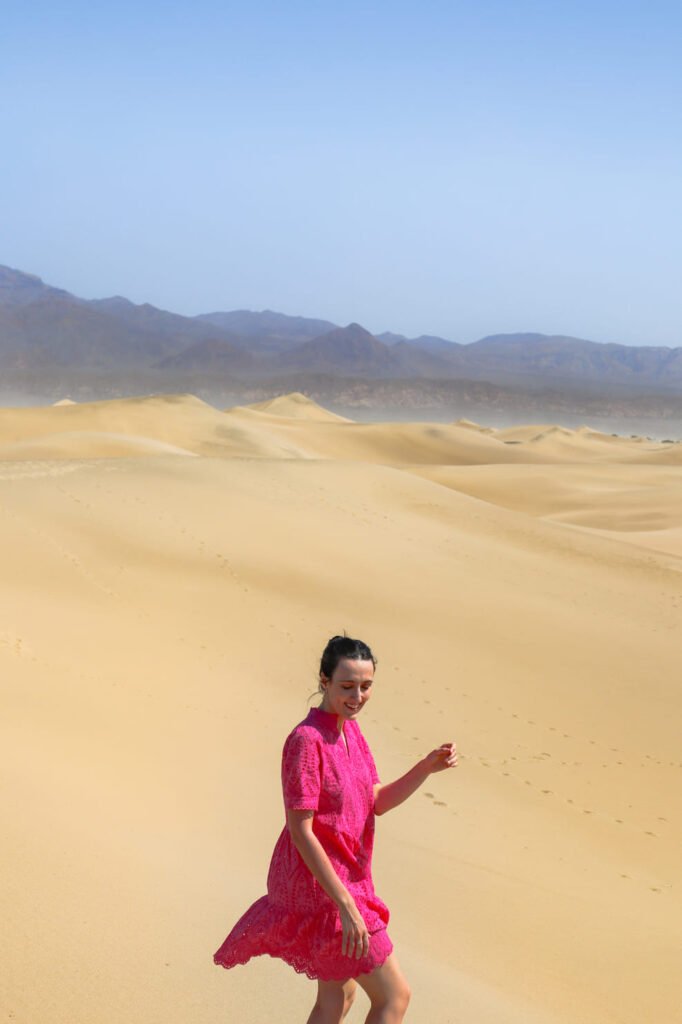
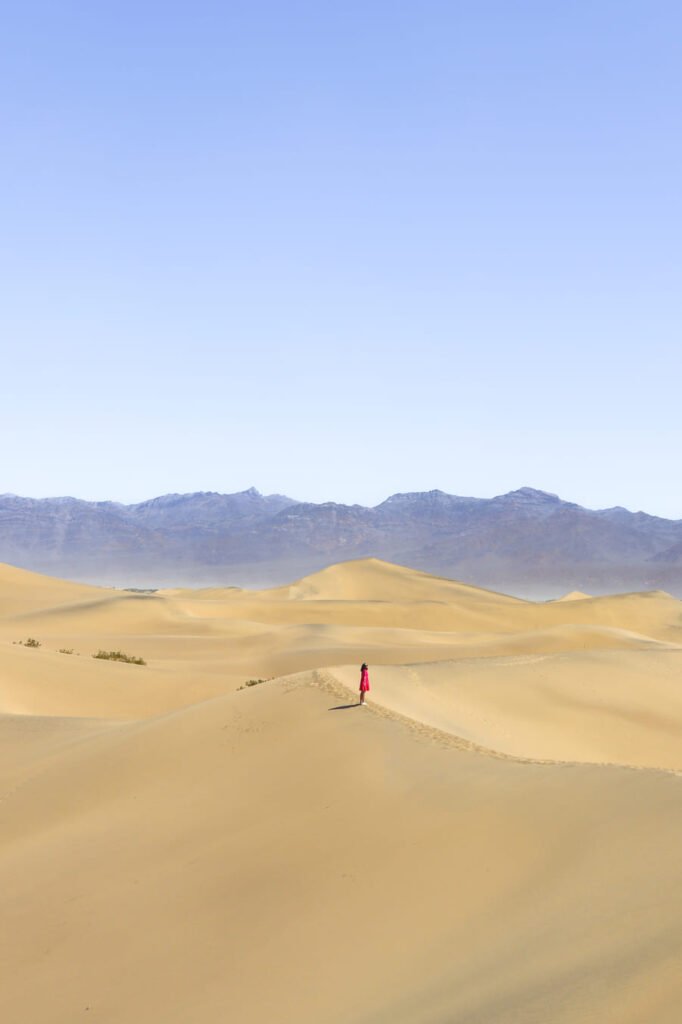
From the parking lot, you have to walk about 10 to 15 minutes to reach a more interesting part of the dunes. There isn’t really a specific place to visit, but it’s worth trying to take pictures from different angles.
Although walking on the sand is quite tiring, the further you go from the parking lot, the fewer people you’ll encounter.
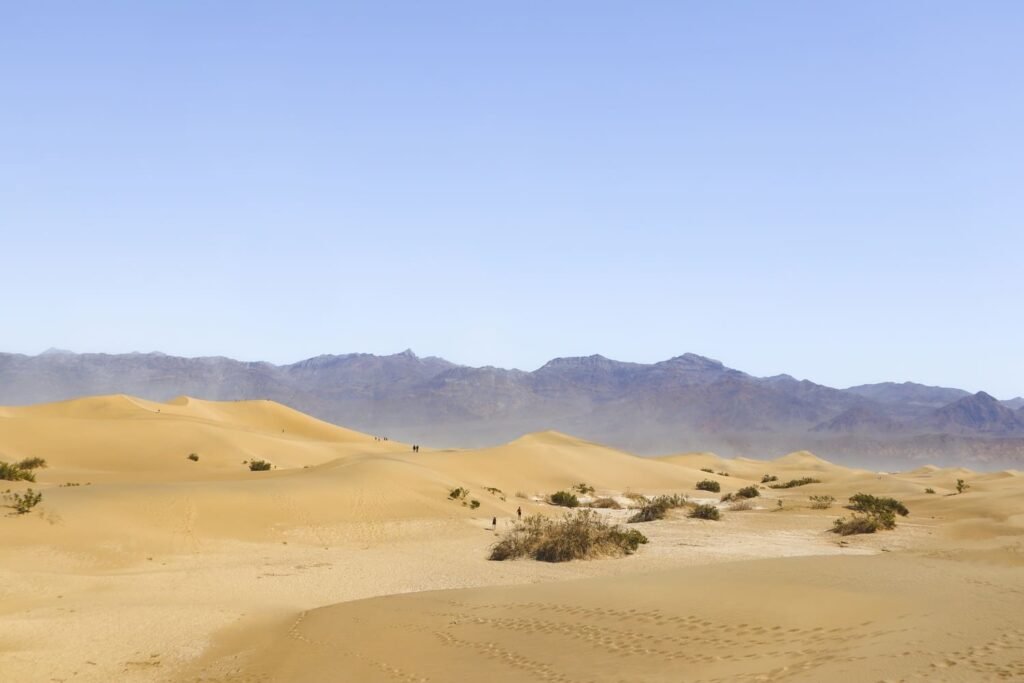
The walk to the highest dune takes about 1h30 (round trip). However, there is no set trail. My advice for enjoying this place is simply to have fun in the dunes 😁!
» Devil’s Golf Course
It’s time to move on to Devil’s Golf Course. This was the place I found least interesting in the park, but it might be worth stopping by as it’s on the way to Badwater Basin.

There used to be a parking lot very close by, but now the road leading to it is closed and in bad condition, so you have to walk there from Badwater Road (26 minutes one way). If this is the case, I don’t think it’s worth doing 50 minutes round trip just to see Devil’s Golf Course.
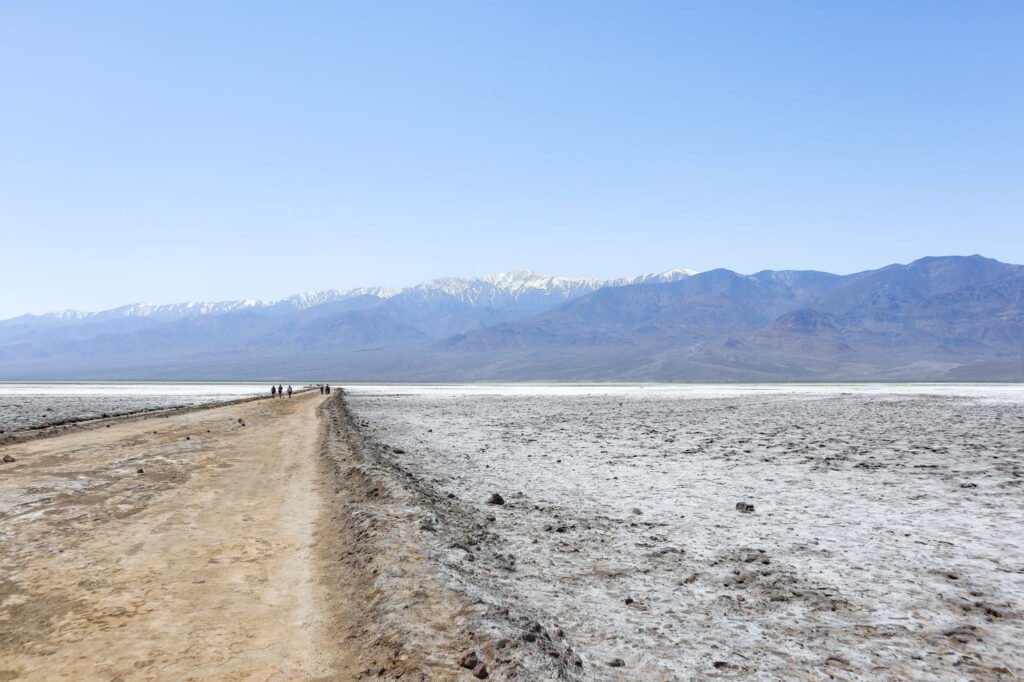
Basically, Devil’s Golf Course is a kind of salt flat that has irregular spirals that result of wind and rain erosion. With a bit of imagination, you could say that it resembles a golf course, but only one used by the devil as it’s quite uneven 😁.
» Badwater Basin
Now head to another must-see in Death Valley. Badwater Basin is the lowest point in North America and is 86 meters (282 ft) below sea level. It is here that we can see one of the most beautiful landscapes in Death Valley: salt flats covering an area of more than 500 km² (200 mi²).
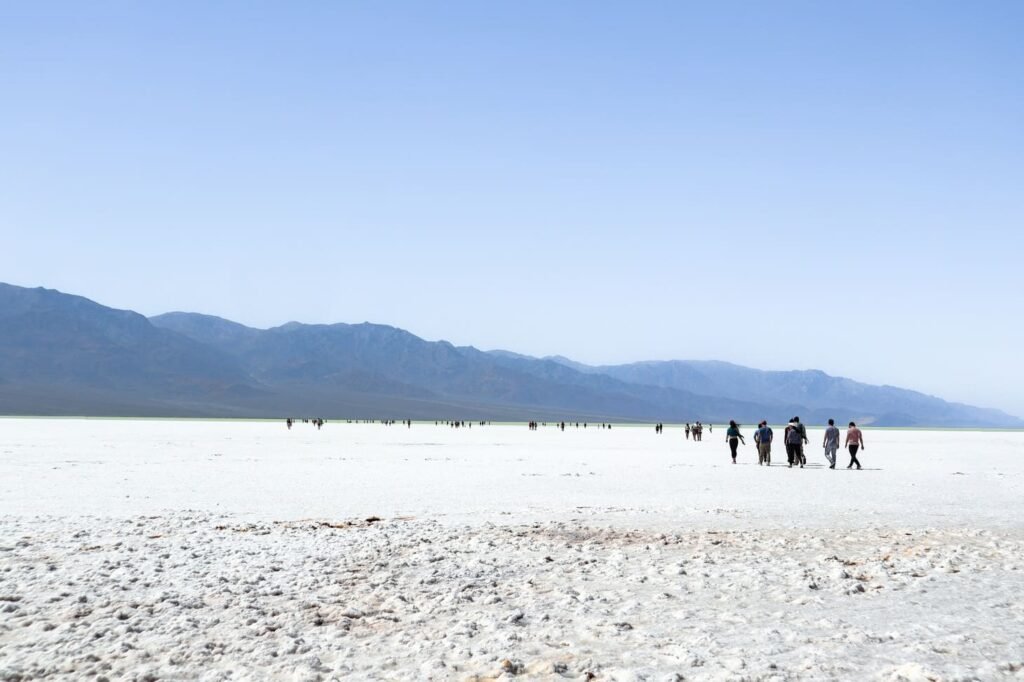
Although the view from the parking lot is incredible, it’s really worth walking a bit to get closer to the salt pans. The first part of the trail goes over a wooden walkway, but after a certain point, the trail goes over the salt pans. It takes about 20 minutes one way to reach the salt pans.


When I visited, the ground was wet and it was more difficult to walk all the way to the salt pans. I ended up getting my shoes dirty. Most likely, you’ll also get your legs dirty since you’ll be splashing salt in your legs as you walk.

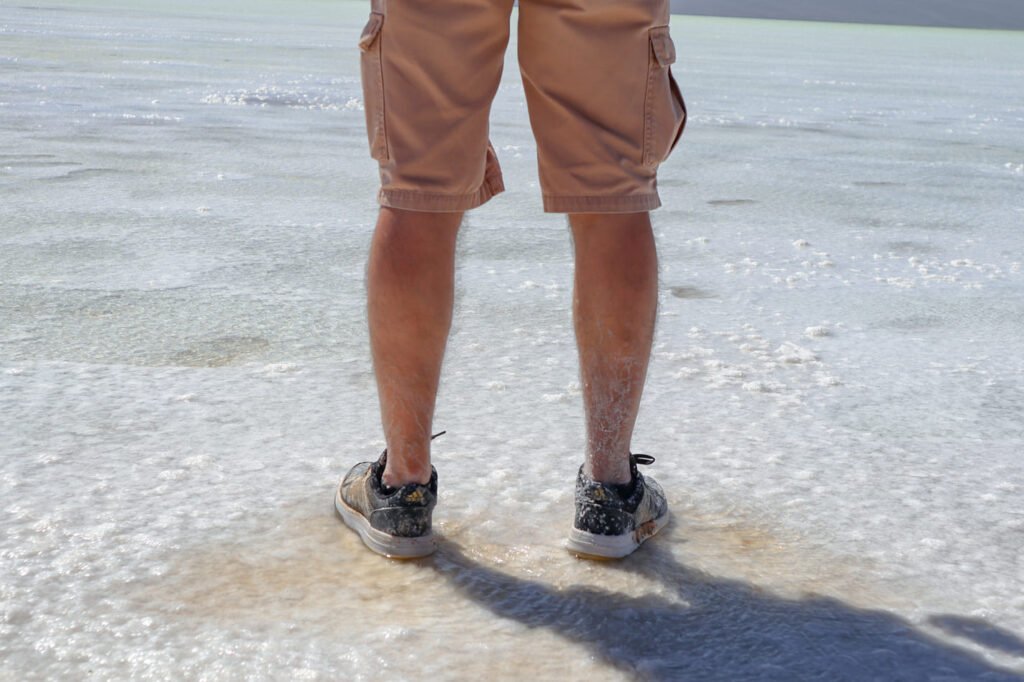
After a path that seemed endless and where there were fewer and fewer people, we reached a part with much more water! The landscape was absolutely magnificent 🥰.
💡 EXTRA TIP: As there was a lot of water on the ground when I visited, many people ended up going barefoot. However, you have to be careful when doing so as the ground is uneven and it has some sharp edges. I ended up cutting my foot and, as you can imagine, it’s not very pleasant to cut yourself while in touch with salty water.
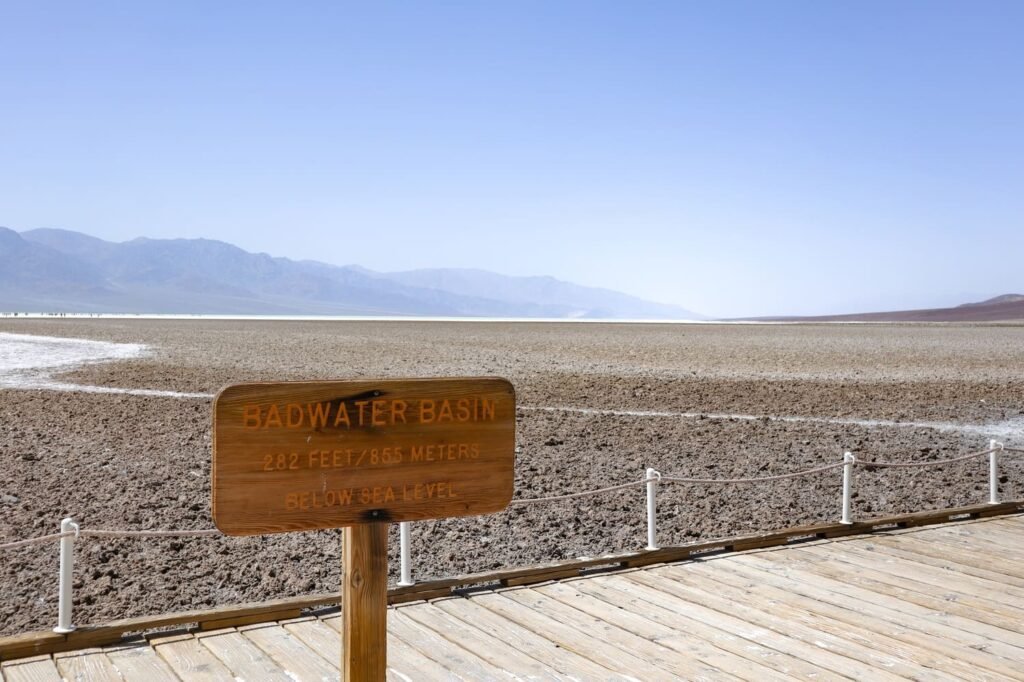
The time you spend at this point will depend a lot on how far you decide to walk and how many photos you take. I assure you it will be difficult to take just a few photos 🥰.
» Artists Drive
Take one of the most beautiful roads in Death Valley – Artists Drive. This is a one-way road (from south to north) and is about 14 km (9 mi) long.
You can drive the whole way and simply admire it or stop to explore any place that might seem interesting (there are quite a few). In fact, there’s one stop that should be a must on Artists Drive, and that’s Artists Palette (more on that below).
» Artists Palette
The Artists Palette is one of the most magical places in the park and one of the top things to do in Death Valley. Its name comes from the colours you can find in the hills there – pink, blue and lilac.
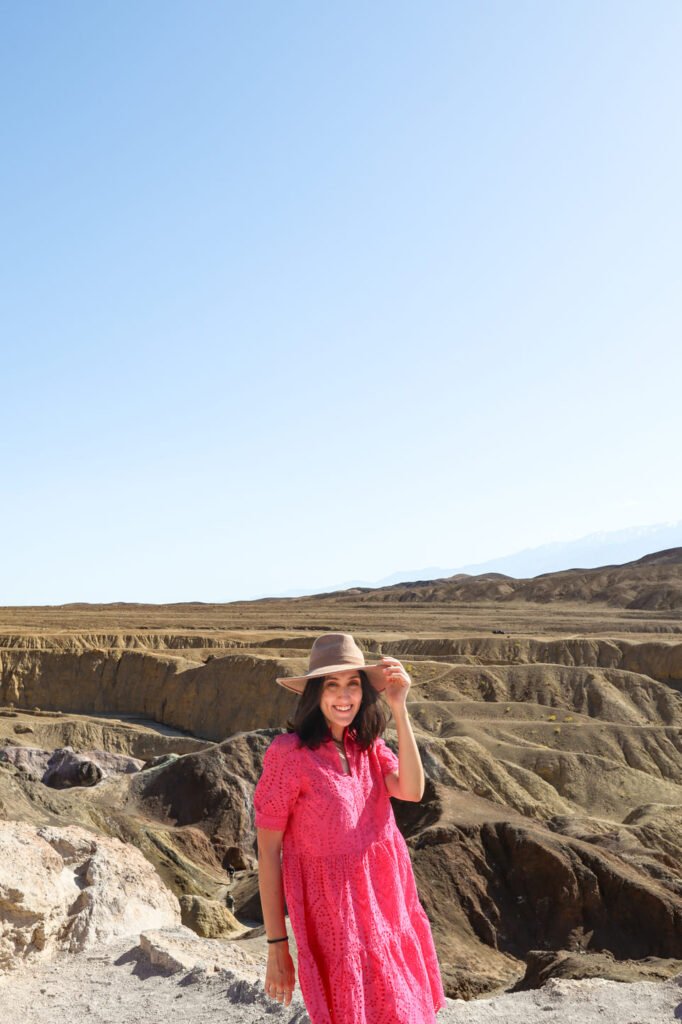
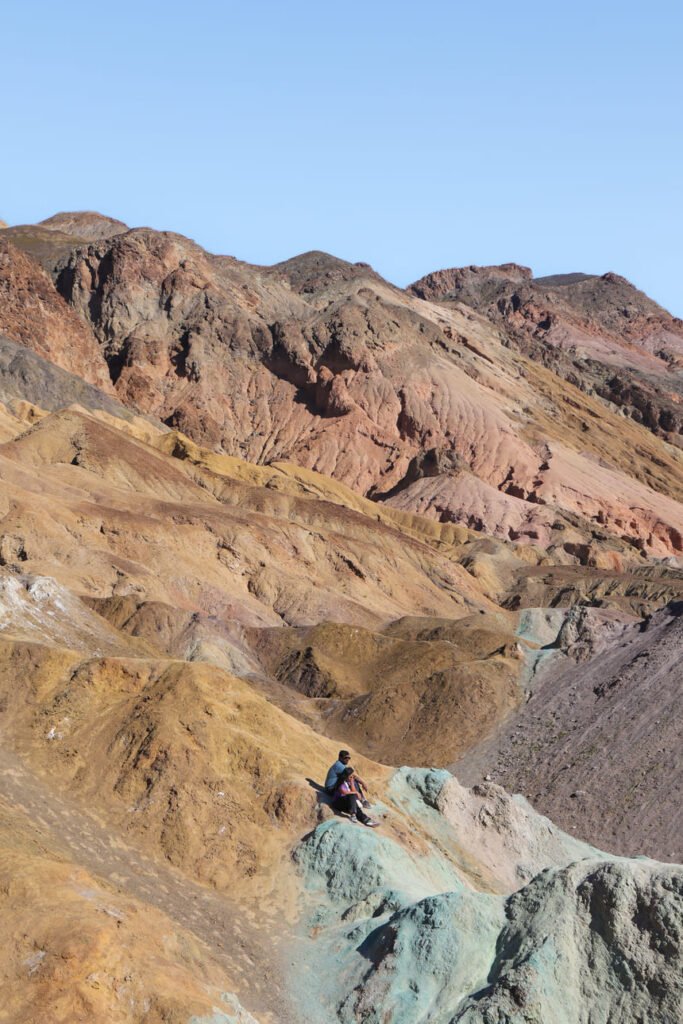
These colours result from the oxidation process of the metals found in the soil. Although it is possible to visit at any time of the day, it is at sunrise and sunset that the colours become most intense.
These colorful hills are hidden behind some more yellowish hills and you have to walk a bit from the parking lot to get there.
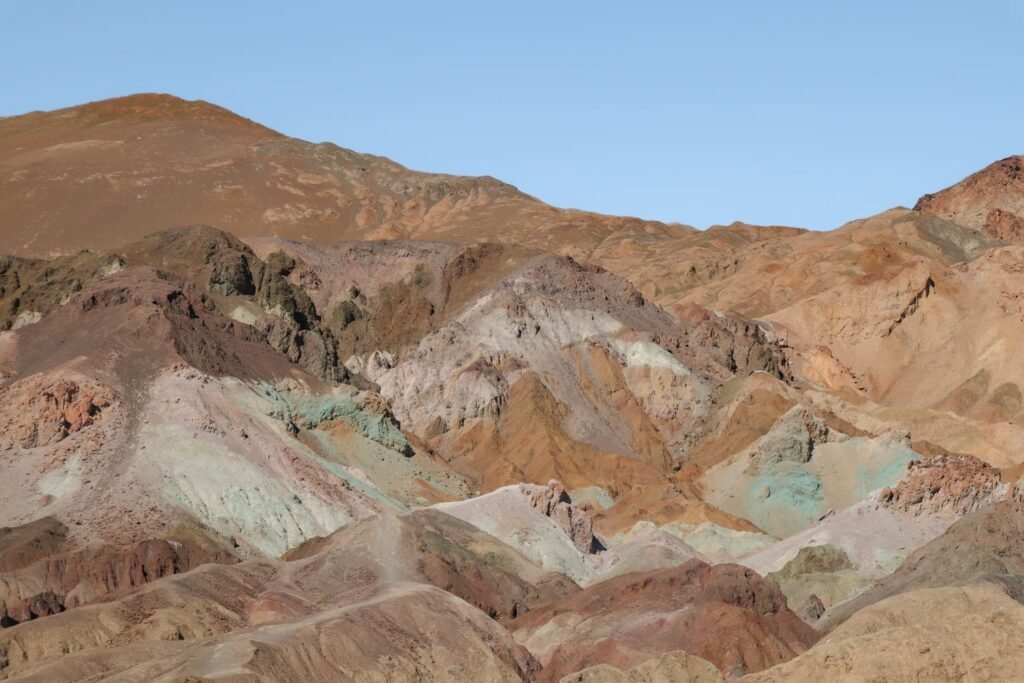
» Zabriskie Point
Zabriskie Point is another place you can’t miss on a Death Valley itinerary! It’s particularly popular at sunrise and sunset, but it’s beautiful at any time of day.
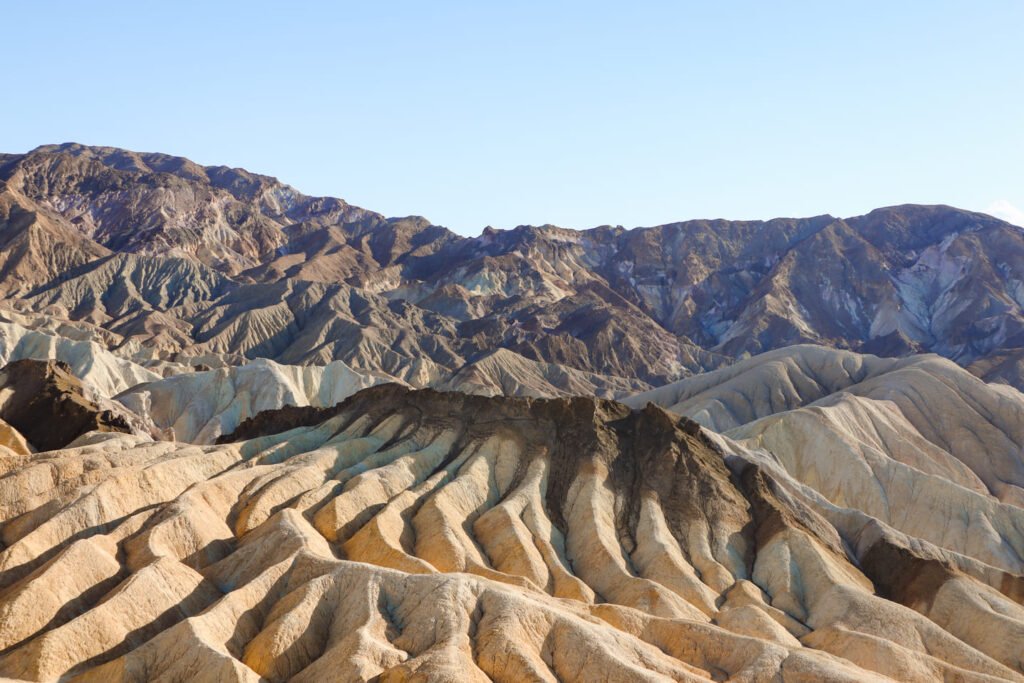
This viewpoint was named in honour of Christian Zabriskie – an important man in the heyday of the Pacific Coast Borax Company, which explored the mining process in this region.
Access to the viewpoint is one of the simplest on this list, as there is a paved path that connects the huge parking lot to the viewpoint.

A visit to this viewpoint takes about 15 minutes, but it can take longer if you choose to explore some of the trails nearby.
» Twenty Mule Team Canyon
A few minutes’ drive from Zabriskie Point, I suggest you visit one of the most fun spots in Death Valley. The Twenty Mule Team Canyon is a one-way road where borax used to be mined.
This is a dirt road, so ideally, you should have a 4×4. Even so, I believe it’s possible to drive on this road without a high-clearance vehicle. The distance is quite short (4.3 km/2.7 mi), but it’s well worth it!

There was no one else driving this road when I visited and not only was it fun, but the views were also stunning.
Although I haven’t tried it, some small hiking trails along this route look very interesting.
» Dante’s View
A day in Death Valley National Park is not complete without a visit to Dante’s View – one of the most famous viewpoints in the park.
This viewpoint is located at a higher altitude, so you can expect to be much colder here. In any case, access is very simple and straightforward from the parking lot.
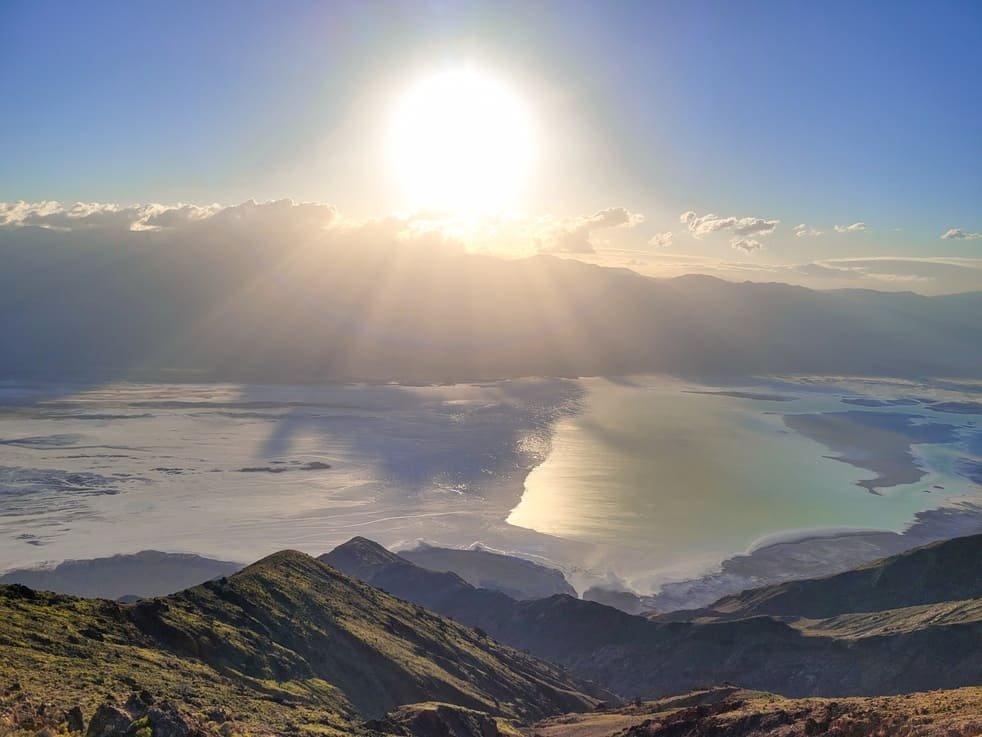
This viewpoint offers unique views over the salt flats of the Badwater Basin, which lies almost 1,700 meters (5,575 ft) below this viewpoint.
What’s more, this is an excellent place for stargazing at night!
Things to do in Death Valley National Park with more time
If you’re lucky and have more than one day to explore this unique park in the United States, then I have a few more suggestions of things to see at Death Valley.
Ubehebe Crater
Ubehebe Crater is another unique spot in this national park. It is a crater of volcanic origin. Although the crater is visible from the parking lot, you can walk down to it or hike around it. This route takes about an hour to complete (2.4 km/1.5 mi in total). However, it is not recommended for those with a fear of heights.
Darwin Falls
I know Death Valley is an arid, dry place, but there are some surprises. Darwin Falls is proof of that, as it’s a completely different landscape from everything else you can see in the park. However, you have to walk along a trail to get there.
Racetrack Playa
Racetrack Playa is probably one of the most quirky places in Death Valley. The main attraction is the giant boulders that have moved across the ground, leaving traces of their movement. However, despite being a popular place on the list of things to do in Death Valley National Park, access to this part of the park requires a 4×4 as you have to drive 44 km (27 mi) on a dirt road.
Eureka Dunes
The Eureka Dunes are another dune in Death Valley. However, unlike the Mesquite Flat Sand Dunes, access is much more complex, as you have to drive along a dirt road to get there.
Hikes in Death Valley
There are several hiking trails in Death Valley, but I’ve decided to list the ones I found most interesting (the average distances and durations shown below are for the entire trail):
- [easy] Natural Bridge Trail (1.6 km/1 mi; 45 minutes): considered by many to be one of the best Death Valley hikes
- [easy] Harmony Borax Works (0.6 km/0.4 mi; 30 minutes): former borax production site
- [moderate] Golden Canyon e Gower Gulch (7 km/4.4 mi; 2 to 3 hours): hike between canyons and around Manly Beacon, with the possibility of making the trail shorter or longer
- [moderate] Desolation Canyon (5.8 km/3.6 mi; 2h30)
- [moderate] Mosaic Canyon (6.4 km/4 mi; 2h30 a 3h): another canyon in Death Valley
- [moderate] Willow Canyon (6.8 km/4.2 mi; 2h30): a trail that, at certain times of the year, leads to a waterfall
- [moderate] Sidewinder Canyon (8.4 km/5 mi; 6h)
- [moderate] Fall Canyon (9.7 km/6 mi; 3h30)
- [hard] Telescope Peak (22.5km/14 mi; 7h): the highest point in the park, which you can climb to
- [hard] Jubilee Mountain (3.5 km/2.2 mi; 3h): panoramic views over the park, including Badwater Basin
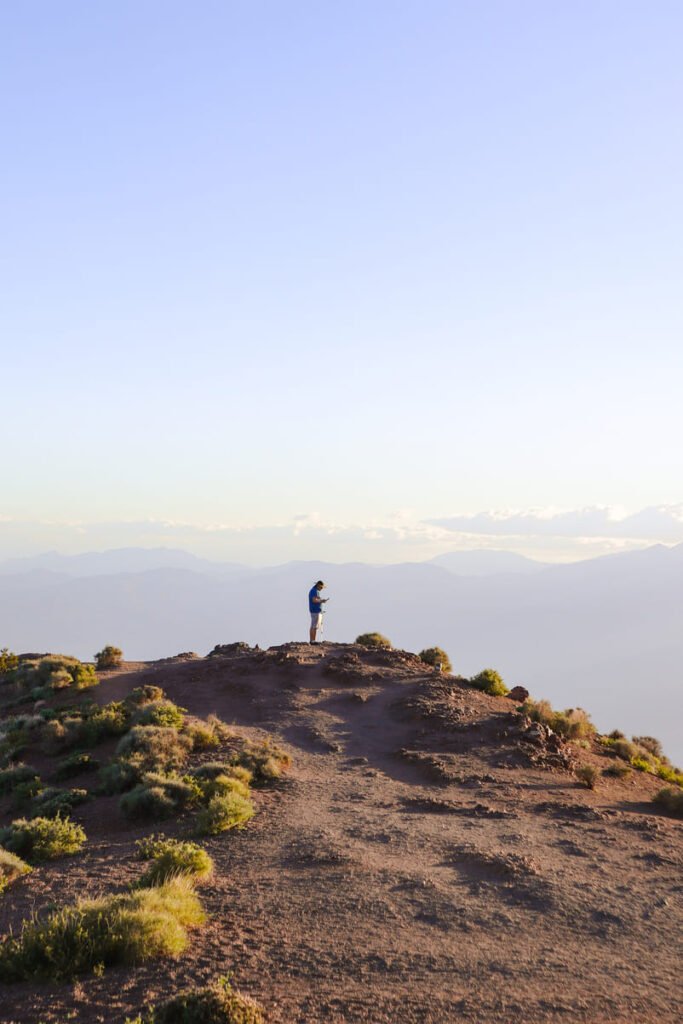

Useful tips for Death Valley National Park
Given the characteristics of a place like Death Valley, there are a few things to bear in mind when planning a trip there, especially in the hottest months, when the sun is too intense and the temperatures too high:
- Protect yourself from the sun with a hat, sunglasses, light clothing and sunscreen.
- Stay hydrated throughout the day.
- Avoid hiking in the warmer months and replace hiking trails with other attractions in the park.
- Tell someone you’re going to visit the park and where you’re going, especially if you plan to do any hiking trail.
- Make sure you have enough fuel for the day you have planned. Inside the park, you can only fill up at Stovepipe Wells and Furnace Creek. There is no cell service in most of the park, so running out of gas in the middle of nowhere on a hot day, without being able to call assistance would be a real nightmare.
- Plan your visit taking into account sunrise and sunset times (especially in the winter months, to optimize your itinerary) to avoid being completely in the dark in the park.
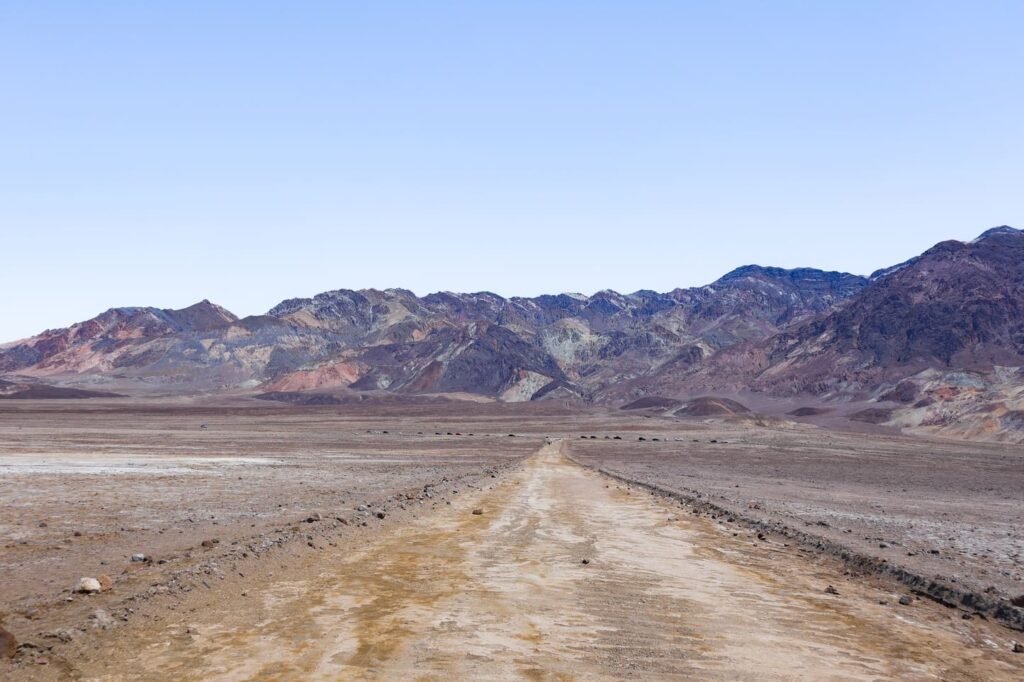
Disclaimer: this post may contain some affiliate links, which means I get a small commission if you buy something through my links. This doesn’t represent any additional cost to you and you’ll be supporting my work here on the blog😊

